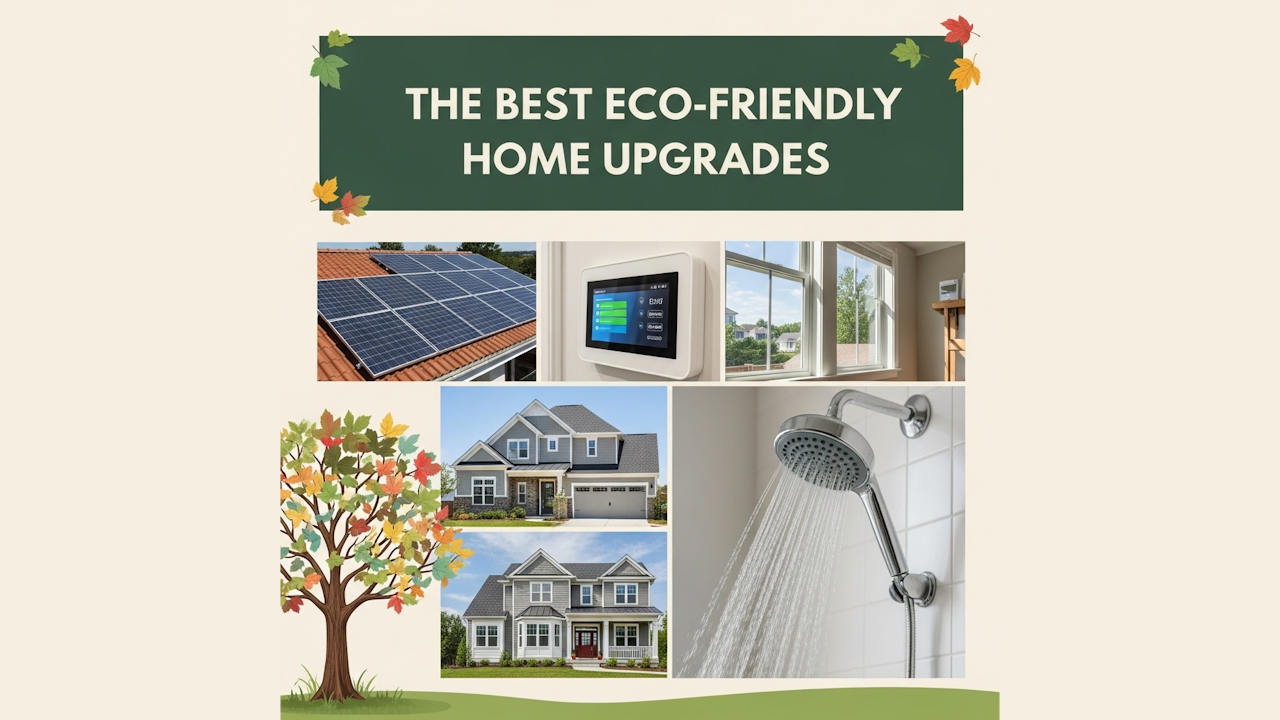As environmental awareness grows, homeowners are increasingly seeking ways to make their homes more sustainable. Eco-friendly home upgrades not only reduce a household’s carbon footprint but also lower energy bills and enhance overall living comfort. Whether you’re building from scratch or renovating, there are numerous effective upgrades that can make your home more efficient and environmentally friendly.
1. Solar Power Systems
One of the most impactful eco-friendly upgrades is installing solar panels. Solar energy reduces reliance on fossil fuels by generating electricity directly from sunlight. While the initial investment may seem steep, many regions offer tax incentives, rebates, and financing options to offset costs. Over time, homeowners often see a substantial return on investment through lower utility bills. In addition to panels, battery storage systems can maximize efficiency by storing excess power for use during nighttime or cloudy days.
2. Energy-Efficient Windows
Standard windows often allow heat to escape in winter and enter during summer, leading to higher energy consumption. Replacing them with energy-efficient windows—especially double or triple-pane versions with low-emissivity (Low-E) coatings—can significantly improve insulation. These windows help maintain a stable indoor temperature, reduce the strain on heating and cooling systems, and increase overall home comfort.
3. Insulation Improvements
Proper insulation is critical for any energy-efficient home. Many older homes lack adequate insulation, causing them to lose heat in the winter and retain it in the summer. Upgrading attic, wall, and floor insulation can drastically improve thermal performance. Eco-conscious materials like sheep’s wool, cellulose, and recycled denim offer effective alternatives to traditional fiberglass insulation while being non-toxic and biodegradable.
4. Smart Thermostats
Heating and cooling systems account for a large portion of a home’s energy use. Smart thermostats help optimize this by learning your routines and adjusting temperatures accordingly. Devices like Nest or Ecobee can detect when no one is home and reduce energy usage automatically. Many models also offer remote access via smartphone, enabling homeowners to make real-time adjustments for better control and efficiency.
5. Water-Saving Fixtures
Water conservation is just as important as energy efficiency. Low-flow showerheads, faucets, and dual-flush toilets can significantly reduce water usage without sacrificing performance. These fixtures help preserve freshwater resources while lowering water bills. Additionally, installing aerators on existing faucets is a cost-effective and easy upgrade that reduces flow rate and maintains pressure.
6. Rainwater Harvesting Systems
Capturing and reusing rainwater is another sustainable practice gaining traction. Rain barrels or more advanced rainwater harvesting systems collect runoff from rooftops, which can then be used for irrigation, flushing toilets, or even laundry in some setups. This not only reduces demand on municipal water supplies but also helps manage stormwater runoff, minimizing erosion and pollution.
7. Native Landscaping and Xeriscaping
Landscaping choices have a significant environmental impact. By opting for native plants that require less water, fertilizer, and maintenance, homeowners can create a thriving, low-impact outdoor space. Xeriscaping takes this further by designing gardens specifically to minimize water use, often replacing grass lawns with gravel, mulch, or drought-resistant plants. These methods support local ecosystems and reduce the need for artificial irrigation.
8. Energy-Efficient Appliances
Upgrading to ENERGY STAR-rated appliances is one of the simplest and most effective ways to reduce energy consumption. Modern refrigerators, dishwashers, washing machines, and dryers are designed to operate using less electricity and water. Though they may have a higher upfront cost, these appliances often pay for themselves over time through lower utility bills and increased durability.
9. LED Lighting
Switching to LED lighting is a quick yet powerful eco-upgrade. LEDs use up to 80% less energy than traditional incandescent bulbs and last significantly longer. They also produce less heat, which contributes to a cooler indoor environment during warmer months. Many smart LED systems can be controlled via apps, offering further energy-saving opportunities by adjusting brightness and scheduling use.
10. Sustainable Building Materials
If you’re renovating or building, consider using sustainable materials like bamboo flooring, reclaimed wood, recycled steel, or concrete with fly ash content. These materials often have a lower environmental impact in terms of extraction, processing, and transportation. Beyond being eco-friendly, many of these options are durable, stylish, and add unique character to a home.
11. Green Roofing Options
Green roofs—also known as living roofs—are covered with vegetation and soil, which provide natural insulation and reduce runoff. Another option is cool roofs, which are designed with reflective materials to reduce heat absorption. Both approaches enhance energy efficiency and extend the life of roofing materials by protecting them from extreme weather conditions.
12. Home Energy Audits
Before diving into upgrades, scheduling a professional home energy audit is a wise step. These audits assess how energy is used and lost in your home, offering targeted recommendations for improvement. Many utility companies offer these audits at low or no cost. This data-driven approach ensures that you prioritize upgrades that will deliver the best performance and savings.
Living Sustainably Starts at Home
Eco-friendly upgrades are more than just a trend—they represent a shift toward sustainable, conscious living. Whether you’re replacing appliances, investing in solar power, or rethinking your landscaping, each change contributes to a healthier planet and a more comfortable home. Small steps can add up quickly, and many upgrades offer immediate and long-term benefits for both homeowners and the environment.

